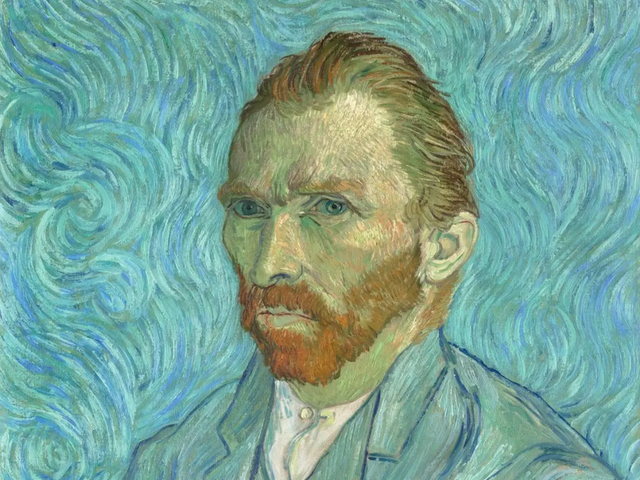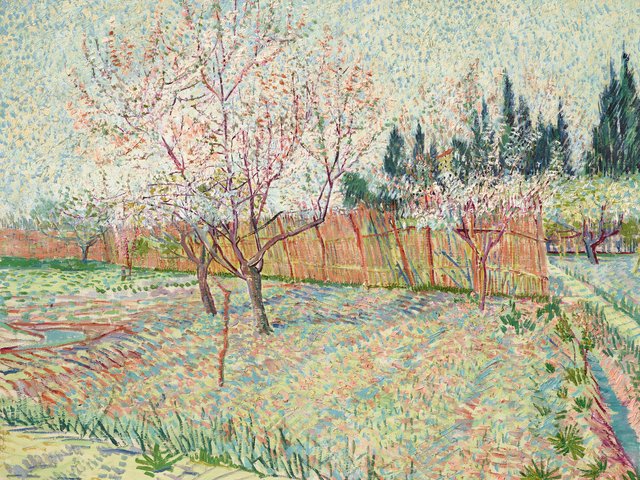Four of Van Gogh’s finest Provencal landscapes were painted in early April 1889, when spring blossom was at its most spectacular. The artist loved nature, so it comes as no surprise that he felt deeply inspired. But what is astonishing is that at this difficult period in his life he was capable of producing such assured masterpieces.

Van Gogh’s Self-portrait with bandaged Ear (January 1889) Courtauld Gallery, London
Just before Christmas 1888, Van Gogh had suffered a mental attack and mutilated his ear. For the following weeks he was in and out of hospital, sleeping most nights in the crowded ward. Yet despite his terrible personal situation, he continued to paint. Art gave him the will to try to recover.
On 24 March 1889, Vincent wrote to his brother Theo, saying that “in a short while I can set to work again in the orchards”. He immediately went on to add an oblique reference to the terrible self-mutilation: “Ah, if only nothing had happened to mess things up for me!” In the same letter he asked Theo to send him 11 tubes of paint, evidence of his determination to get back to the easel.
In early April, Van Gogh completed two fine landscapes: Orchard in Blossom, View of Arles and Peach Trees in Blossom. What is striking is quite how different they are stylistically.

Van Gogh’s Orchard in Blossom, View of Arles (April 1889) Van Gogh Museum, Amsterdam (Vincent van Gogh Foundation)
Orchard in Blossom, View of Arles (April 1889) was painted on the eastern outskirts of the town, just a few minutes’ walk from the hospital. The lower half of the canvas is dominated by a green meadow, sprinkled with spring flowers. Beyond the blossoming trees and a handful of soaring cypresses is the skyline of the town, dominated by the tower of the church of St Trophime on the far right.
This picture, as described by Van Gogh, was “almost all green with a little lilac and grey—on a rainy day”. Presumably he was so anxious to get back to painting that he had rushed out of the hospital when there was a short break in the weather. Blossom is so brief that the artist felt he could not afford to waste a moment. He must have worried that further rain would would bring the petals down.
Van Gogh was then strongly influenced by his enthusiasm for Japanese prints (an example hangs in the back of his Self-portrait with bandaged Ear). The affection for blossom in Japan makes it a frequent motif in their art. The foreground trees in Van Gogh’s painting clearly echo those found in their prints - the tilted and starkly angular forms, the dark outlines framing the trunks and the abrupt cropping.
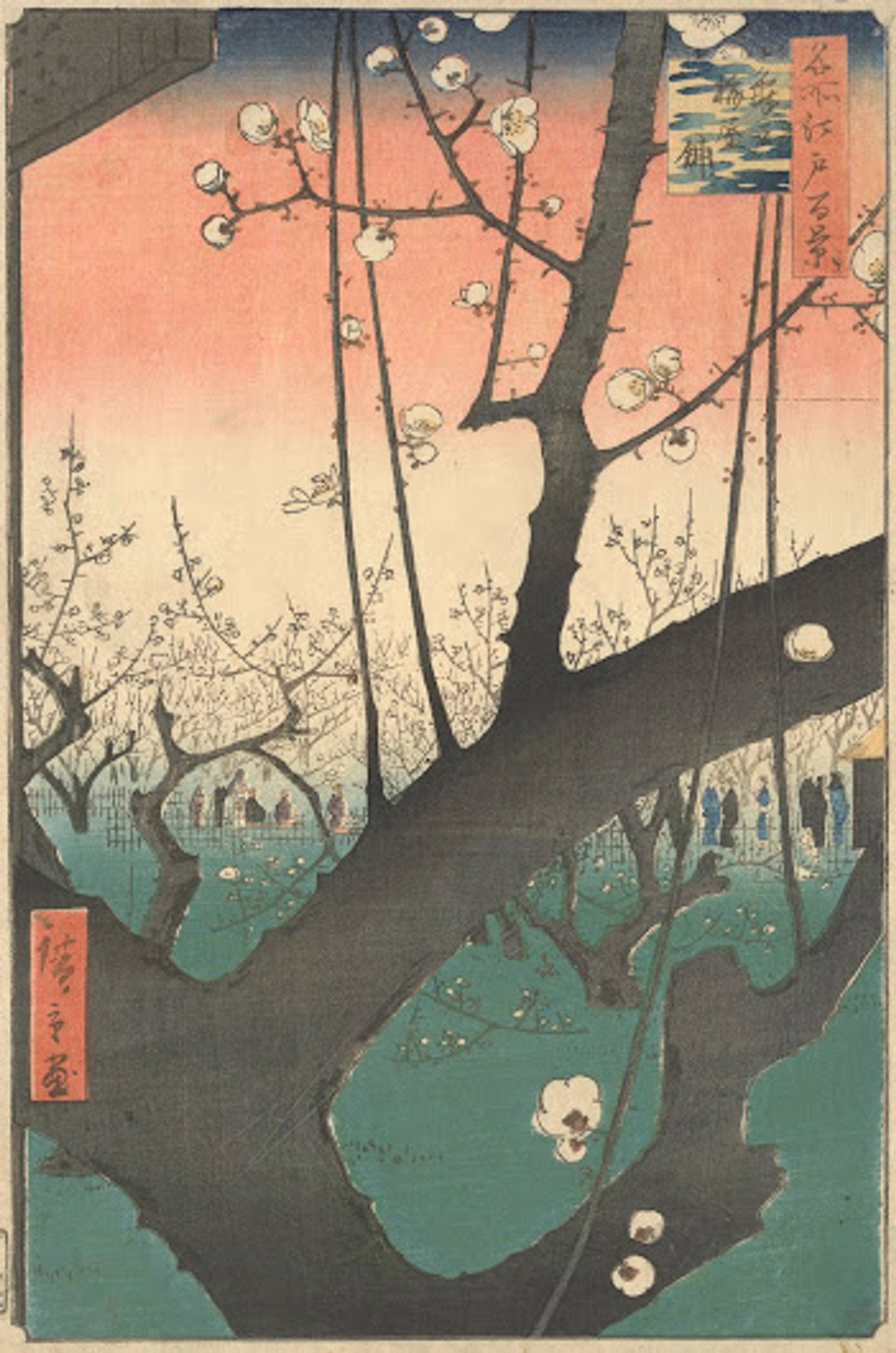
Utagawa Hiroshige’s Plum Garden in Kameido (1857) Van Gogh Museum, Amsterdam (Vincent van Gogh Foundation)
When painting Orchard in Blossom, View of Arles Van Gogh may well have been thinking of a particular print which he owned, Utagawa Hiroshige’s Plum Garden in Kameido (1857). This was among his favourites woodcuts.
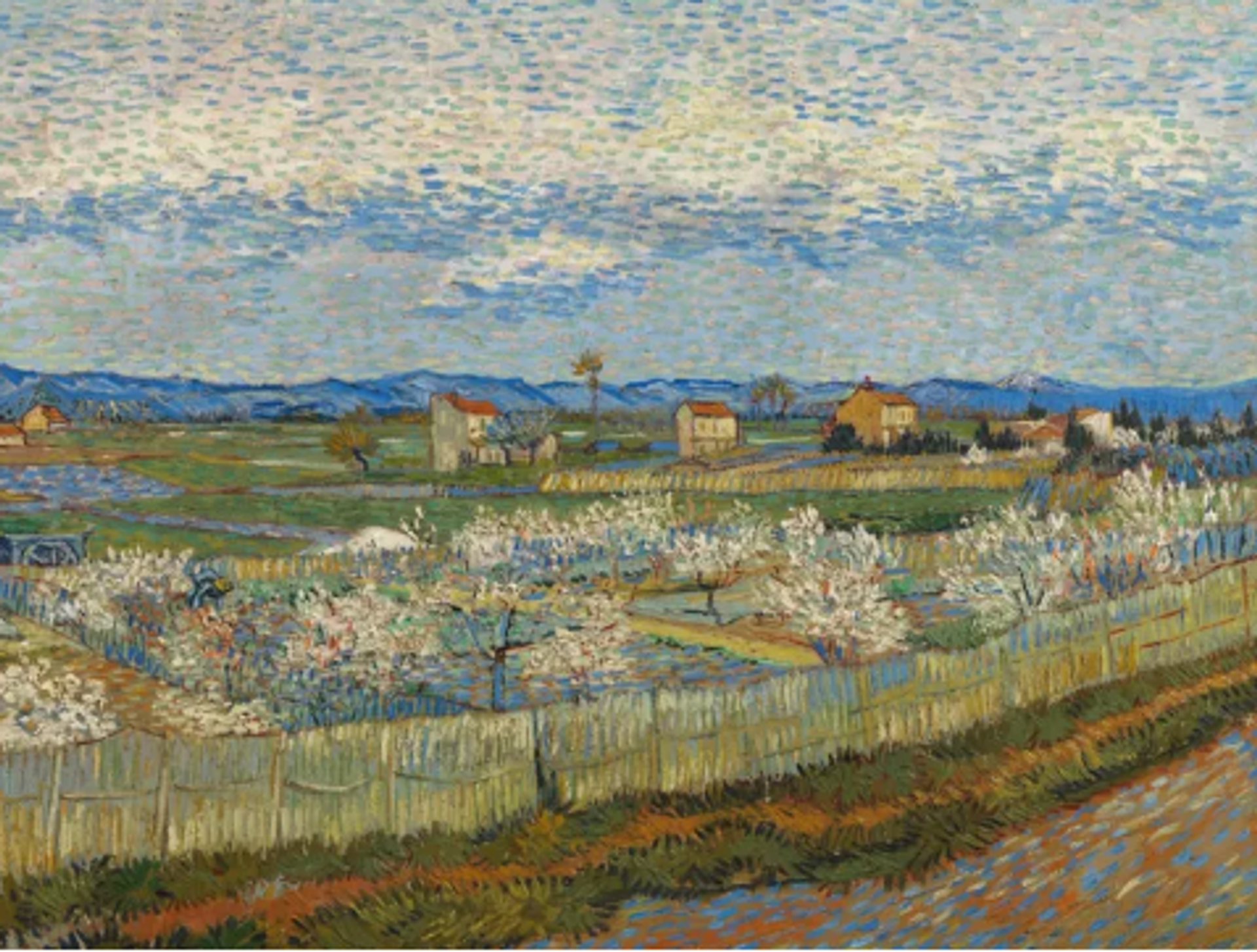
Van Gogh's Peach Trees in Blossom (April 1889) Courtauld Gallery, London
Peach Trees in Blossom was also painted in early April, although it is so different in mood. It is a much “softer” picture, predominantly in pastel shades. Composed mainly with short, parallel brushstrokes, it represents a bird’s-eye panoramic view of the countryside. It was done just to the north east of Arles, on the plain below Les Alpilles.
Van Gogh gave a staccato description of the picture in a letter to his artist friend Paul Signac: “Green countryside with little cottages, blue line of the Alpilles, white and blue sky. The foreground, enclosures with reed hedges where little peach trees are in blossom—everything there is small, the gardens, the fields ... the trees, even those mountains, as in certain Japanese landscapes.”

Van Gogh's View of Arles (April 1889) Bayerische Staatsgemäldesammlungen, Neue Pinakothek, Munich
In Van Gogh’s third blossom scene, View of Arles (April 1889), the composition is dramatically divided by the trunks of three poplars, looking towards a bird’s-eye view of the town, with a canal in the foreground. This time St Trophime is on the left. The middle ground depicts an orchard with rows of blossoming trees, its pastel hues creating a soothing, harmonious effect. A farmer, seemingly as tall as the trees, toils away (towards the right). Red roofs near the horizon (on the left) add tiny splashes of a contrasting colour.
In November 1889, Theo expressed his admiration for this picture: “A view over the countryside in springtime with grey poplars crossing the canvas in such a way that you can’t see either the bottom or the top of the tree. I like it enormously. That truly is nature.” Vincent chose this painting as one of the eight he later decided to show in the exhibition of Les Vingt group in Brussels in January 1890.
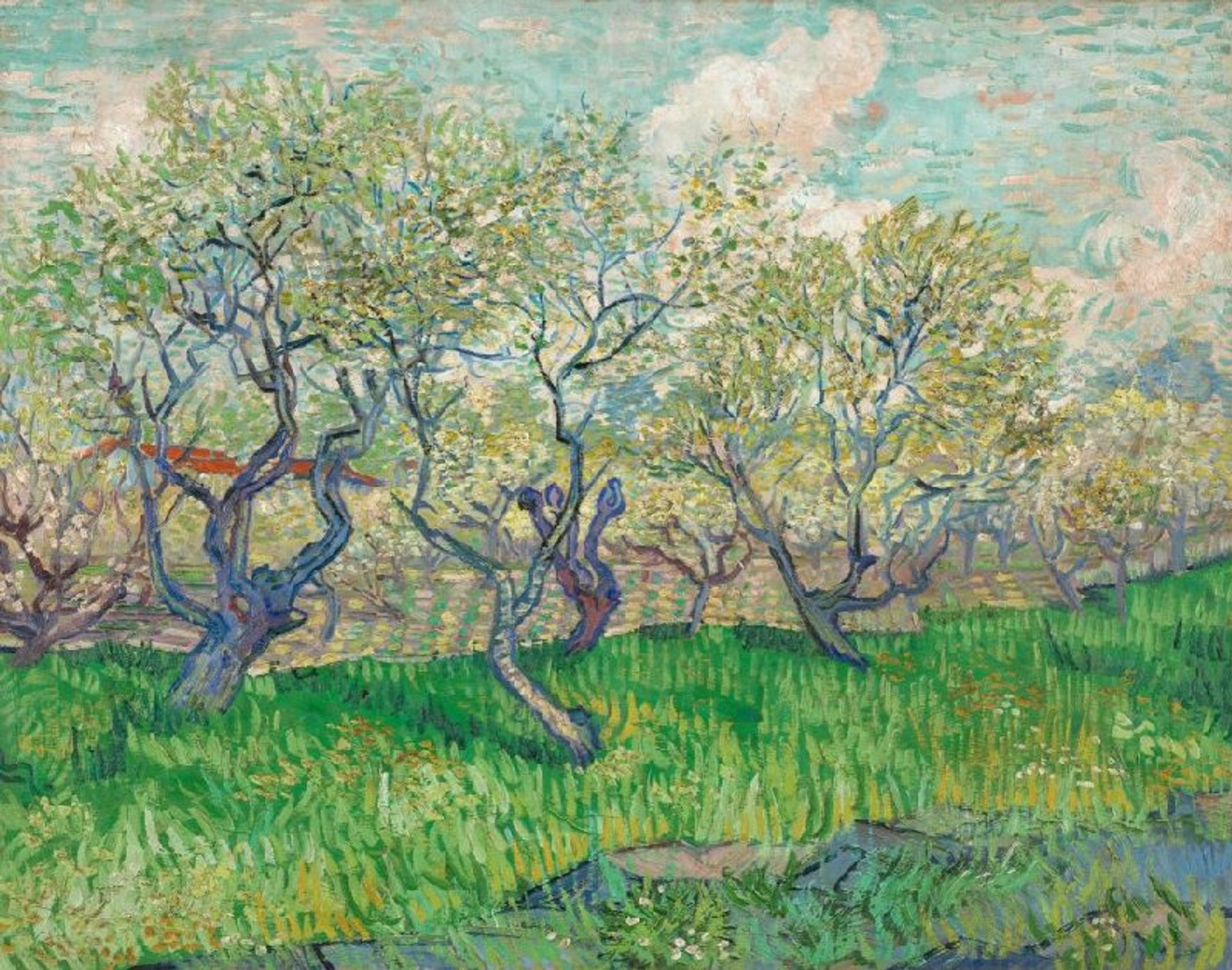
Van Gogh’s Orchard in Blossom (April 1889) Van Gogh Museum, Amsterdam (Vincent van Gogh Foundation)
Van Gogh’s final spring scene was Orchard in Blossom (April 1889), a more conventional picture. He was not completely happy with it, later finessing it in July. He wrote to his brother: “I’ve set to reworking it from memory, and have found a way better to express the harmony of the tones.” This was often his practice: to do most of the work on a landscape outside, in front of the motif, and then make minor colour adjustments back in his studio.
During April 1889 Van Gogh focussed on his work, but the fecund springtime beauty of these paintings belies the challenging circumstances in which they were created. He found life too difficult after the mental crisis that had tragically led him to mutilate his ear. He had become mainly confined to the hospital, other than for brief painting excursions of a few hours in the nearby countryside.
While working on these four blossoming orchards, Van Gogh had on his mind the question of whether he could live independently. With spring, the landscape was bursting into life with fresh growth, but for him personally, the prospect was bleaker.
By the end of April, Van Gogh reluctantly realised that he needed to live in an institution. On 8 May 1889 he set off for the asylum of Saint-Paul-de-Mausole, just outside Saint-Rémy-de-Provence. He would end up staying there a full year, painting whenever his health allowed.




